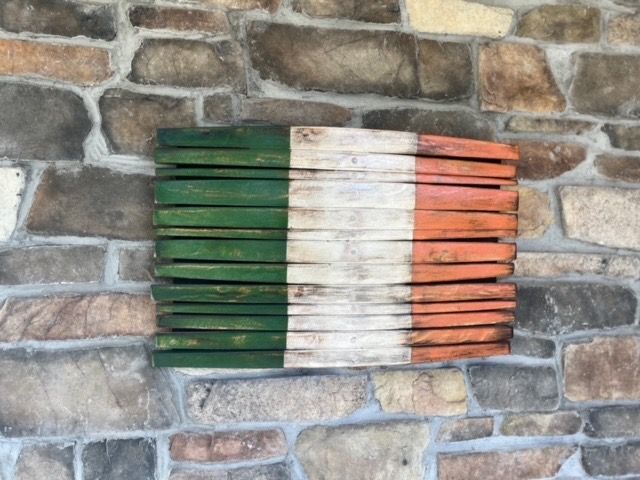[caption id="attachment_80161" align="aligncenter" width="200"] Antóin Mac Gabhann 
By Daniel Neely
Some years ago, I was in East Durham, up at the great Catskills Irish Arts Week, and I wanted to buy Antóin Mac Gabhann’s “Doorways And Windowsills,” the album he made with banjoist Mick O’Connor.
I’d been disorganized and waited until the last minute to buy it, by which time all the copies, I was told, were sold out.
However, I tracked Mac Gabhann down after his final performance of the week and asked if, by any chance, he had one last copy to sell.
It turns out he did and he made it a special point to unpack a bag to find it for me.
I was grateful for his most gentlemanly gesture, but learned something about the kind of gracious, giving, musician he is.
The album has since become a favorite of mine and I’ve long wondered when Mac Gabhann might release a follow up.
The wait is over.
Mac Gabhann has just released a new album, “Tunesmith,” of accompanied fiddle music which features Charlie Lennon on piano.
It is a rewarding collection that reinforces my impressions of his musical nature and will surely charm lovers of traditional music.
Born in County Cavan to a musical family, Mac Gabhann has led a long and distinguished musical life.
He was active on Dublin’s session scene and played with the Green Linnet Ceili Band there while at school in the 1960s.
Afterward, he traveled abroad during the summers to work and got to know musicians in places like London and New York. (Indeed, he contributed tunes to tunebook Martin Mulvihill released in the early 1980s.)
He moved to County Meath in 1974, where he developed a strong reputation as an important teacher.
Over the years, Antóin has taught at festivals, compiled books (notably, “The Turoe Stone Collection” of Vincent Broderick tunes), been very involved with Comhaltas Ceoltóirí Éireann (he is a fixture at the annual Fleadh Cheoil na hÉireann and is known as “The King of Street Sessions”), toured and recorded with a litany of music’s most notable players, and has won all the music’s major fiddle competitions (All-Ireland Senior Fiddle, Fiddler of Dooney, Fiddler of Oriel and An tOireachtas).
It’s no wonder Comhaltas awarded him with the title “ard-ollamh” (high professor) in 2006.
On this album, Mac Gabhann is joined by Charlie Lennon, another of the music’s greats, who plays a supporting role on piano.
Lennon (who is also a fiddle player) comes from a spectacularly musical family (his brother Ben is a renowned fiddle player, as is his nephew Maurice) and brings a subtle lift to this album that is lovely and absolutely indispensable.
From the first track, it’s clear that this album is a winner.
The music is warm and rich and the performances have great life to them.
And as he did on “Doorways And Windowsills,” Mac Gabhann has curated an incredibly tasteful selection of tunes.
Take, for example, “Trotting To Larne,” a slip jig composed in 1957 by Antrim fiddle player John T. Blair.
It is a brilliantly uncomplicated tune, but one that is also stunningly attractive. A wonderful find.
Listen, too, to “From Glann To Cappagh,” a hornpipe his daughter Áine composed. Again, it’s a simple tune but one that has beautiful little touches that Mac Gabhann teases out in make it quite memorable. The barn dances, which Lennon composed, are great as well.
Tracks built on more commonly known tunes also stand out. “Paddy Gone To France / … ” is a tasty selection of reels, while “The Old Down The Broom / The Thrush In The Storm” mixes jig and reel dance rhythms, and does a great job of showcasing Lennon’s brilliantly understated piano playing. MacGabhann’s playing on a set of Ed Reavy tunes, “Pat Clarke's / Maudabawn Chapel / Never Was Piping So Gay” is lovely, as is the album’s closer, the air “When Days End Is Done,” which features several guest musicians, including Mac Gabhann’s daughters, Caitlín and Bernadette.
However, the track I am really most taken with is “The Last Train From Loughrea.”
A Vincent Broderick composition, “Last Train” is a “program piece” that evokes the experience of a steam train traveling between Loughrea and Attymon.
Mac Gabhann is joined here by percussionist Aimee Farrell, whose creative rhythmic counterpoint to Mac Gabhann’s flowing melody and ornamentation helps give this track the same sort of poetic visuality that Seamus Ennis brought to another program piece, “The Fox Chase.”
It’s a rare approach in Irish traditional music that is beautifully executed here.
Between Mac Gabhann and Lennon, this album contains some of the most gentlemanly music you’ll likely find.
The playing is wonderful, with just a touch of deckle around the edges to remind you of the humanity in the music. This album will appeal to anyone who loves traditional music and is highly recommended to all.
For more information about Mac Gabhann and his album, visit www.tunesmith.ie.










